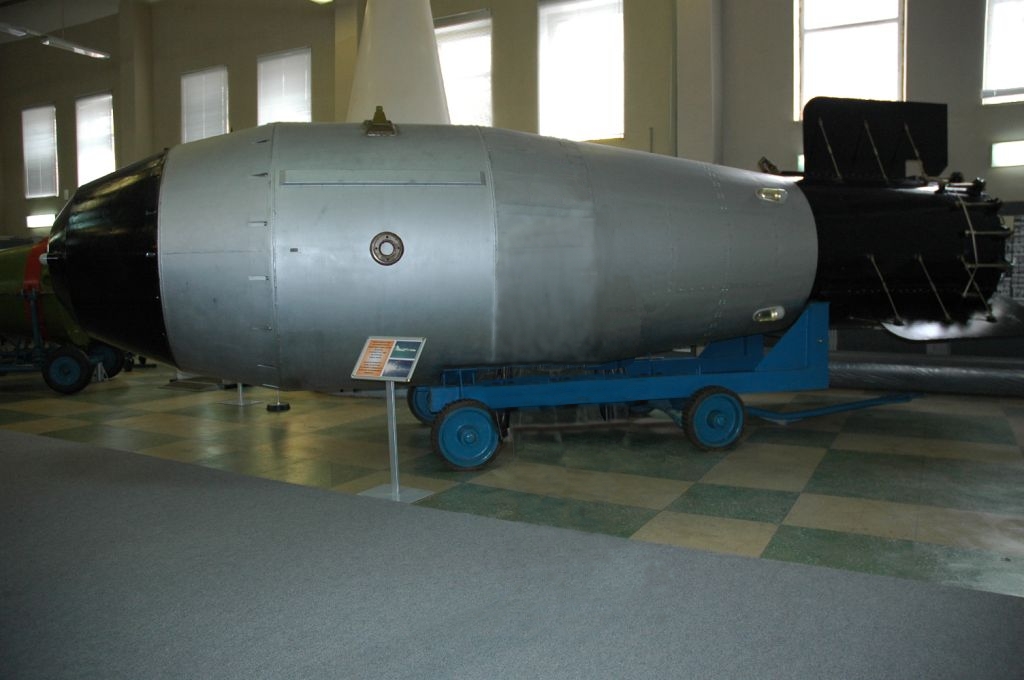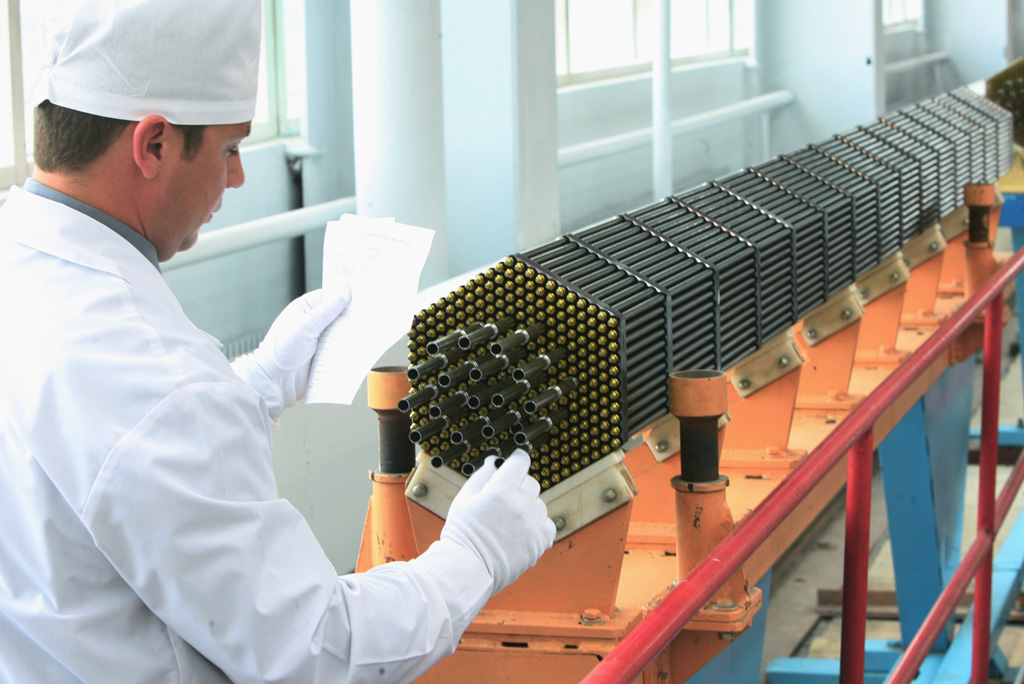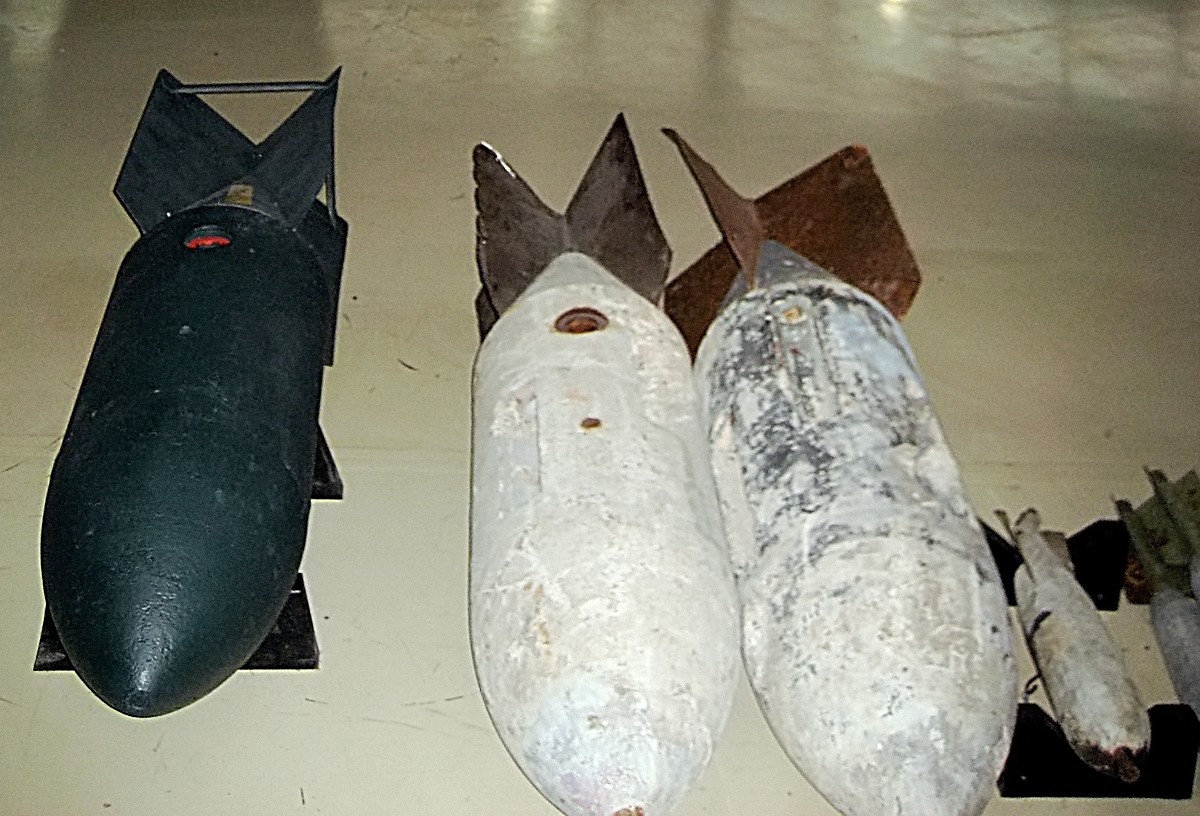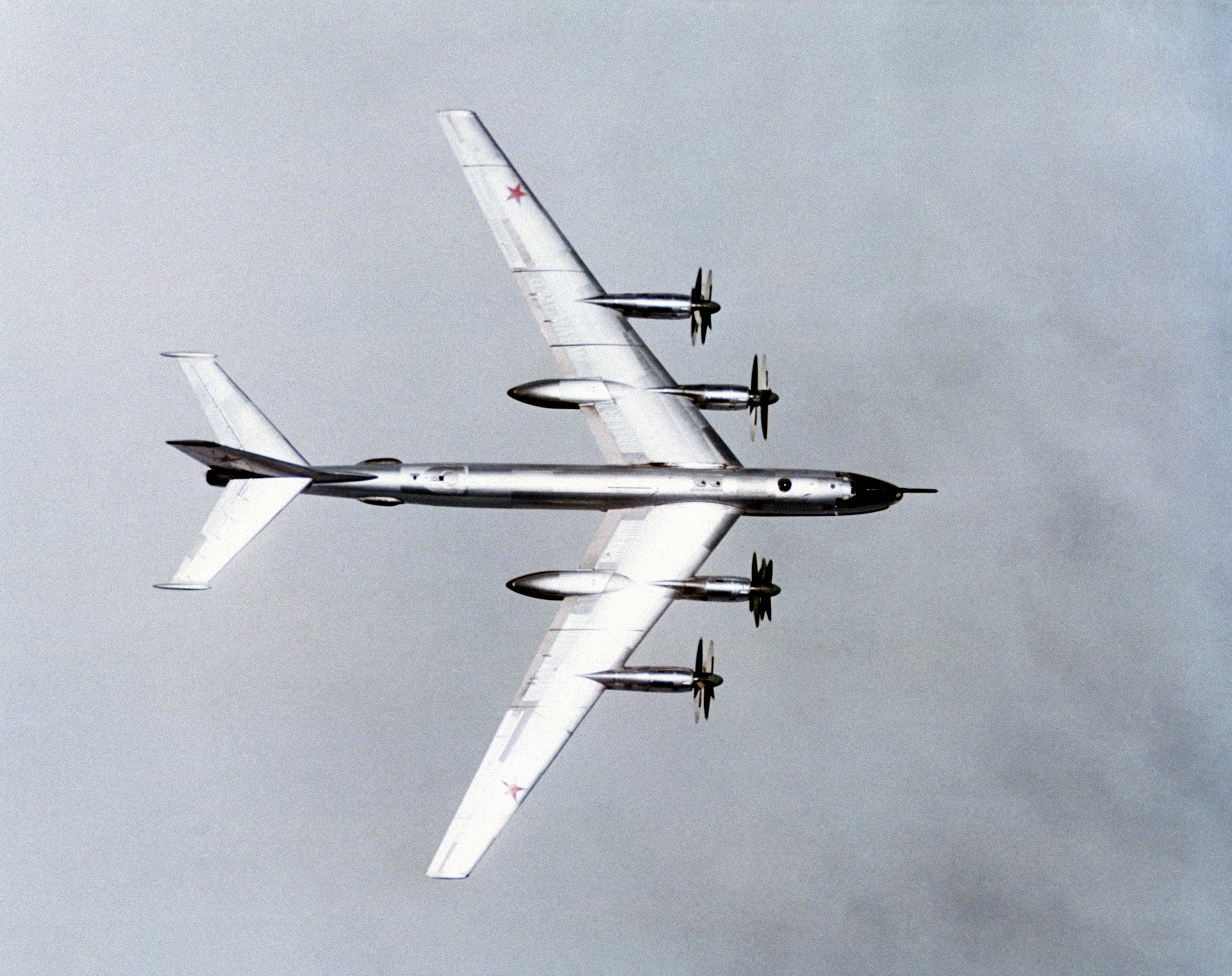|
Tsar Bomba
The Tsar Bomba () ( code name: ''Ivan'' or ''Vanya''), also known by the alphanumerical designation "AN602", was a thermonuclear aerial bomb, and the most powerful nuclear weapon ever created and tested. Overall, the Soviet physicist Andrei Sakharov oversaw the project at Arzamas-16, while the main work of design was by Sakharov, Viktor Adamsky, Yuri Babayev, Yuri Smirnov, and Yuri Trutnev. The project was ordered by Nikita Khrushchev in July 1961 as part of the Soviet resumption of nuclear testing after the Test Ban Moratorium, with the detonation timed to coincide with the 22nd Congress of the Communist Party of the Soviet Union. Tested on 30 October 1961, the test verified new design principles for high-yield thermonuclear charges, allowing, as its final report put it, the design of a nuclear device "of practically unlimited power". The bomb was dropped by parachute from a Tu-95V aircraft, and detonated autonomously above the cape Sukhoy Nos of Severny Isl ... [...More Info...] [...Related Items...] OR: [Wikipedia] [Google] [Baidu] |
Rosatom
Rosatom, ( rus, Росатом, p=rɐsˈatəm}) also known as Rosatom State Nuclear Energy Corporation, the State Atomic Energy Corporation Rosatom or Rosatom State Corporation, is a Russian state corporation headquartered in Moscow that specializes in nuclear energy, nuclear non-energy goods and high-tech products. Established in 2007, the organization comprises more than 350 enterprises, including scientific research organizations, the nuclear weapons complex, and the world's only nuclear icebreaker fleet. The state corporation is one of the largest in the world's nuclear energy industry. The organization ranks first as the largest electricity generating company in Russia, producing 215.746 TWh of electricity, 20.28% of the country's total electricity production. The corporation also ranks first in the overseas NPP construction, responsible for 76% of global nuclear technology exports: 35 nuclear power plant units, at different stages of development, in 12 countries, a ... [...More Info...] [...Related Items...] OR: [Wikipedia] [Google] [Baidu] |
Aerial Bomb
An aerial bomb is a type of explosive or incendiary weapon intended to travel through the air on a predictable trajectory. Engineers usually develop such bombs to be dropped from an aircraft. The use of aerial bombs is termed aerial bombing. Bomb types Aerial bombs include a vast range and complexity of designs. These include unguided gravity bombs, guided bombs, bombs hand-tossed from a vehicle, bombs needing a large specially-built delivery-vehicle, bombs integrated with the vehicle itself (such as a glide bomb), instant-detonation bombs, or delay-action bombs. As with other types of explosive weapons, aerial bombs aim to kill and injure people or to destroy materiel through the projection of one or more of blast, fragmentation, radiation or fire outwards from the point of detonation. Early bombs The first bombs delivered to their targets by air were single bombs carried on unmanned hot air balloons, launched by the Austrians against Venice in 1849 during the Firs ... [...More Info...] [...Related Items...] OR: [Wikipedia] [Google] [Baidu] |
Matochkin Strait
Matochkin Strait or Matochkin Shar (russian: Ма́точкин Шар) is a strait, structurally a fjord, between the Severny and Yuzhny Islands of Novaya Zemlya. It connects the Barents Sea and the Kara Sea. Geography The Matochkin Strait is one of the largest fjords in the world. The banks along the strait are high and steep. Its length is approximately and its width in its narrowest part is approximately . The strait is covered with ice for the most of the year. There are abandoned fishing settlements along the strait (Matochkin Shar, Stolbovoy). History The Tsar Bomba was detonated on October 1961 in the vicinity of Matochkin Strait in 1961, over the Novaya Zemlya archipelago. It is also the site where, from 1963 to 1990, about 39 underground nuclear tests took place in a vast array of tunnels and shafts under Mount Lazarev and other massifs. After 2000, Russia started to reactivate the test site by enlarging old tunnels and starting construction work. Each summer sinc ... [...More Info...] [...Related Items...] OR: [Wikipedia] [Google] [Baidu] |
Mityushikha Bay
Mityushikha Bay (russian: Губа Митюшиха) is a bay on Severny Island in Novaya Zemlya, Russia. Nuclear tests were conducted in 1961 in the area of the bay. Geography It is a long fjord open to the west near the SW end of the island, just north of the western end of the Matochkin Strait. The fjord narrows about to the east from its mouth. Gagachy Island is located in the middle of the bay, before the stretch that becomes narrow. See also *List of fjords of Russia This is a list of the most important fjords of the Russian Federation. Fjords In spite of the vastness of the Arctic coastlines of the Russian Federation there are relatively few fjords in Russia. Fjords are circumscribed to certain areas only; ... * Raduga (nuclear test) References Novaya Zemlya Fjords of Russia {{Russia-geo-stub ... [...More Info...] [...Related Items...] OR: [Wikipedia] [Google] [Baidu] |
Novaya Zemlya
Novaya Zemlya (, also , ; rus, Но́вая Земля́, p=ˈnovəjə zʲɪmˈlʲa, ) is an archipelago in northern Russia. It is situated in the Arctic Ocean, in the extreme northeast of Europe, with Cape Flissingsky, on the northern island, considered the easternmost point of Europe. To Novaya Zemlya's west lies the Barents Sea and to the east is the Kara Sea. Novaya Zemlya consists of two main islands, the northern Severny Island and the southern Yuzhny Island, which are separated by the Matochkin Strait. Administratively, it is incorporated as Novaya Zemlya District, one of the twenty-one in Arkhangelsk Oblast, Russia.Law #65-5-OZ Municipally, it is incorporated as Novaya Zemlya Urban Okrug.Law #258-vneoch.-OZ The population of Novaya Zemlya as of the 2010 Census was about 2,429, of whom 1,972 resided in Belushya Guba, an urban settlement that is the administrative center of Novaya Zemlya District. The indigenous population (from 1872 to the 1950s when it was re ... [...More Info...] [...Related Items...] OR: [Wikipedia] [Google] [Baidu] |
Severny Island
Severny Island (russian: Се́верный о́стров, Severnyy ostrov, Northern Island) is a Russian Arctic island. It is the northern island of the Novaya Zemlya archipelago. It was historically called Lütke Land after Friedrich Benjamin von Lütke, who explored it. It lies approximately 400 km north of the Russian mainland. It has an area of , making it the 30th-largest island in the world. It is part of Russian Arctic National Park. Geography Severny Island is separated from Yuzhny Island (''Southern'') by the narrow Matochkin Strait. Forty percent of the island is covered by the Severny Island ice cap, which is the largest glacier by area and by volume in Europe (if counted as part of it). Severny Island is known for its numerous glaciers. Cape Flissingsky is the easternmost point of Severny Island. Climate The climate for Severny Island is extremely cold, with even the warmest months not reaching the freezing mark. The climate is severe, and temperature vari ... [...More Info...] [...Related Items...] OR: [Wikipedia] [Google] [Baidu] |
Sukhoy Nos
Sukhoy Nos (russian: Сухой Нос, literally 'Dry Cape'; there is another Sukhoy Nos on Vaygach island south of Novaya Zemlya) is a cape on Severny Island, the northern island of the archipelago Novaya Zemlya, projecting westward into the Barents Sea. The site lies near the southwestern corner of the island, from Mityushikha Bay, north of Matochkin Strait, which separates Severny from Yuzhny Island, the southern island of the archipelago. The cape is composed of black and reddish shale. Underwater sandbars are located off its northern shore. In the 19th century, numerous birds nested on the steep cliffs, particularly loons. in the '' Brockhaus and Efron Encyclopedic Dictionary ... [...More Info...] [...Related Items...] OR: [Wikipedia] [Google] [Baidu] |
Tupolev Tu-95
The Tupolev Tu-95 (russian: Туполев Ту-95; NATO reporting name: "Bear") is a large, four-engine turboprop-powered strategic bomber and missile platform. First flown in 1952, the Tu-95 entered service with the Long-Range Aviation of the Soviet Air Forces in 1956 and was first used in combat in 2015. It is expected to serve the Russian Aerospace Forces until at least 2040. A development of the bomber for maritime patrol is designated the Tu-142, while a passenger airliner derivative was called the Tu-114. The aircraft has four Kuznetsov NK-12 engines with contra-rotating propellers. It is the only propeller-powered strategic bomber still in operational use today. The Tu-95 is one of the loudest military aircraft, particularly because the tips of the propeller blades move faster than the speed of sound. Its distinctive swept-back wings are set at an angle of 35°. The Tu-95 is the only propeller-driven aircraft with swept wings that has been built in large numbers. ... [...More Info...] [...Related Items...] OR: [Wikipedia] [Google] [Baidu] |
22nd Congress Of The Communist Party Of The Soviet Union
The 22nd Congress of the Communist Party of the Soviet Union (russian: XXII съезд КПСС) was held from 17 to 31 October 1961. In fourteen days of sessions (22 October was a day off), 4,413 delegates, in addition to delegates from 83 foreign Communist parties, listened to Nikita Khrushchev and others review policy issues. At the Congress, the Sino-Soviet split hardened, especially due to Soviet de-Stalinization efforts, and it was the last Congress to be attended by the Chinese Communist Party. The Congress elected the 22nd Central Committee. Speeches, splits and plans Other than Sino-Soviet disputes, matters dealt with at the Congress included accepting the Third Program of the CPSU and statute, and the opening of the Volgograd Hydroelectric Plant, the largest in Europe or Russia at the time. The Soviets also tested the world's most powerful thermonuclear bomb ("Tsar Bomba") in Novaya Zemlya in the Arctic Circle, creating the largest man-made explosion in history. They ... [...More Info...] [...Related Items...] OR: [Wikipedia] [Google] [Baidu] |
Test Ban Moratorium (1958-1961)
Test(s), testing, or TEST may refer to: * Test (assessment), an educational assessment intended to measure the respondents' knowledge or other abilities Arts and entertainment * ''Test'' (2013 film), an American film * ''Test'' (2014 film), a Russian film * ''Test'' (group), a jazz collective * ''Tests'' (album), a 1998 album by The Microphones Computing * .test, a reserved top-level domain * test (Unix), a Unix command for evaluating conditional expressions * TEST (x86 instruction), an x86 assembly language instruction People * Test (wrestler), ring name for Andrew Martin (1975–2009), Canadian professional wrestler * John Test (1771–1849), American politician * Zack Test (born 1989), American rugby union player Science and technology * Proof test * Stress testing * Test (biology), the shell of sea urchins and certain microorganisms * Test equipment Sports * Test cricket, a series of matches played by two national representative teams * Test match (rugby league), ... [...More Info...] [...Related Items...] OR: [Wikipedia] [Google] [Baidu] |
Nuclear Testing
Nuclear weapons tests are experiments carried out to determine nuclear weapons' effectiveness, yield, and explosive capability. Testing nuclear weapons offers practical information about how the weapons function, how detonations are affected by different conditions, and how personnel, structures, and equipment are affected when subjected to nuclear explosions. However, nuclear testing has often been used as an indicator of scientific and military strength. Many tests have been overtly political in their intention; most nuclear weapons states publicly declared their nuclear status through a nuclear test. The first nuclear device was detonated as a test by the United States at the Trinity site in New Mexico on July 16, 1945, with a yield approximately equivalent to 20 kilotons of TNT. The first thermonuclear weapon technology test of an engineered device, codenamed "Ivy Mike", was tested at the Enewetak Atoll in the Marshall Islands on November 1, 1952 (local date), also by ... [...More Info...] [...Related Items...] OR: [Wikipedia] [Google] [Baidu] |
Nikita Khrushchev
Nikita Sergeyevich Khrushchev (– 11 September 1971) was the First Secretary of the Communist Party of the Soviet Union from 1953 to 1964 and chairman of the country's Council of Ministers from 1958 to 1964. During his rule, Khrushchev stunned the communist world with his denunciation of his predecessor Joseph Stalin's crimes, and embarked on a policy of de-Stalinization with his key ally Anastas Mikoyan. He sponsored the early Soviet space program, and enactment of moderate reforms in domestic policy. After some false starts, and a narrowly avoided nuclear war over Cuba, he conducted successful negotiations with the United States to reduce Cold War tensions. In 1964, the Kremlin leadership stripped him of power, replacing him with Leonid Brezhnev as First Secretary and Alexei Kosygin as Premier. Khrushchev was born in 1894 in a village in western Russia. He was employed as a metal worker during his youth, and he was a political commissar during the Russian Civil Wa ... [...More Info...] [...Related Items...] OR: [Wikipedia] [Google] [Baidu] |




